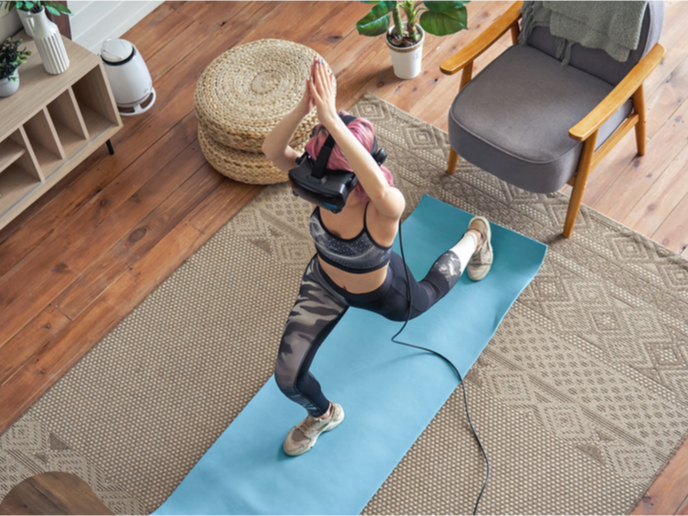How wearables could lead the way for more immersive Virtual Reality experiences
Virtual Reality (VR) experiences so far tend to revolve around two technologies: head-mounted displays (HMDs) and controllers. If we’re moving anything else than our head or hands, this simply won’t be reflected in the virtual world. But this might change soon thanks to reflections and prototypes brought by the EU-funded project WEARTUAL (Designing and Developing Wearables for Virtual Reality Environments with a Research Through Design Process). Oğuz Buruk, Marie Skłodowska-Curie fellow at Tampere University, has been investigating ways to integrate wearables into VR experiences to make them more immersive. He accepted our invitation to provide an early glimpse of his findings, as well as discuss the wearable prototypes he’s been working on.
How did you come up with the idea of combining wearables with VR headsets? What benefits did you foresee for such combinations?
Oğuz Buruk: I had already been working on playful wearables for 5 years when I decided to explore wearable design for Extended Reality (XR) environments. Headsets for VR, Augmented Reality (AR) and Mixed Reality (MR) are developing rapidly, and we have seen many other accessories being commercialised such as haptic gloves or 360° treadmills. Being an expert on playful wearables, I knew they could really provide transformative experiences and enhanced social interaction. They can cover a wide variety of interaction modalities beyond haptic feedback, such as tangible or bioadaptive modalities. Although these aspects were explored to some extent in the playful wearables field, there was not much work done in the XR field. The relationship between physical and virtual layers also added another challenge to the design of such wearables, so I wanted to explore how their strengths would manifest themselves in the virtual world.
Can you tell us more about the prototypes you developed? What makes them particularly innovative?
Our prototypes are still under development. We’re focusing on three different areas. In one of our concepts, we explore how our bodies can be used as a scaffold to create dangling, floating and tangible interfaces providing more realistic and immersive experiences. The idea is to leverage the different interaction modalities wearables can introduce by using the body as a support point. Other concepts focus on the use of wearables in semi-virtual clothing and costumes, as well as the utilisation of bioadaptive cues in different social contexts. WEARTUAL is a research-through-design project, and we innovate by inventing new use cases rather than creating technical advancements. All concepts were created with the help of users, students and stakeholders with different backgrounds. The design directions we put forth, along with many different XR wearable concepts proposed by different stakeholders, were published at the CHI 2021 conference – which is one of the most prestigious venues for human-computer interaction.
How did you proceed to test these prototypes?
Unfortunately, we could not test them with users due to COVID-19 restrictions. We are currently considering alternative paths to disseminate our artefacts to different audiences.
What would you say are the project’s most important results so far?
Our project has been very productive in all foreseen topics. We could create the likes of frameworks or design recommendations, design methods, and critical and speculative design outcomes for playful wearables, bodily integrated technologies, and XR environments. One of the most impactful outcomes of the project is the Design Framework for Playful Wearables which we developed in collaboration with Katherine Isbister from the University of California, Santa Cruz and Theresa Jean Tanenbaum from the University of California, Irvine. This framework is the starting point of current design concepts in WEARTUAL and will be helpful to playful wearable designers working in any kind of interactive environment, including XR. Based on this framework, we have organised participatory design workshops with different stakeholders and created comprehensive design directions and concepts for gaming wearables and XR environments. By collaborating with other Marie Skłodowska-Curie fellows in the Gamification Group, we also developed the Transurban framework which combines bodily technologies and transhumanism with smart city design (with Mattia Thibault) and the gamification of online conferences with alternate reality games (with Mattia Thibault and Zampeta Legaki) in COVID-19 times. All these outcomes point to new directions for the design of bodily integrated technologies such as wearables. These will guide researchers and designers of wearables and XR developers alike.
What are the next steps you plan to take?
Our current objective is to finish the development of the prototypes to create polished experiences and disseminate our results to a wide population. We want to pursue the implementation of our prototypes in public spaces such as museums as soon as the effects of the pandemic ease off.
Do you have any specific plans that would get you closer to market-ready applications?
The Gamification Group is used to acquiring funding for the commercialisation of research projects’ outcomes. We will definitely look into creating market-ready applications for end users as well, by pursuing further funding opportunities such as Research to Business funding of Business Finland or Digital Grants from the European Institute of Innovation and Technology.
Could you provide one or two concrete examples of such applications?
Currently, hand tracking and free-hand interaction are the main interaction modalities in VR and AR headsets. However, for more complex interactions, buttons and tangible interfaces are still needed. This is where the utilisation of wearables shows promise. In this context, I believe that the fruits of our research will lead to the creation of mainstream and common XR interfaces in wearable forms. Another concrete application is virtual clothes and there are already several fashion houses selling clothes that can be worn in virtual environments. Understanding the user experiences created by virtual garments and their effects on self-expression and identity is crucial for virtual fashion, and is one of the purposes of our project.
Keywords
WEARTUAL, VR, virtual reality, immersive, wearable devices, prototype



